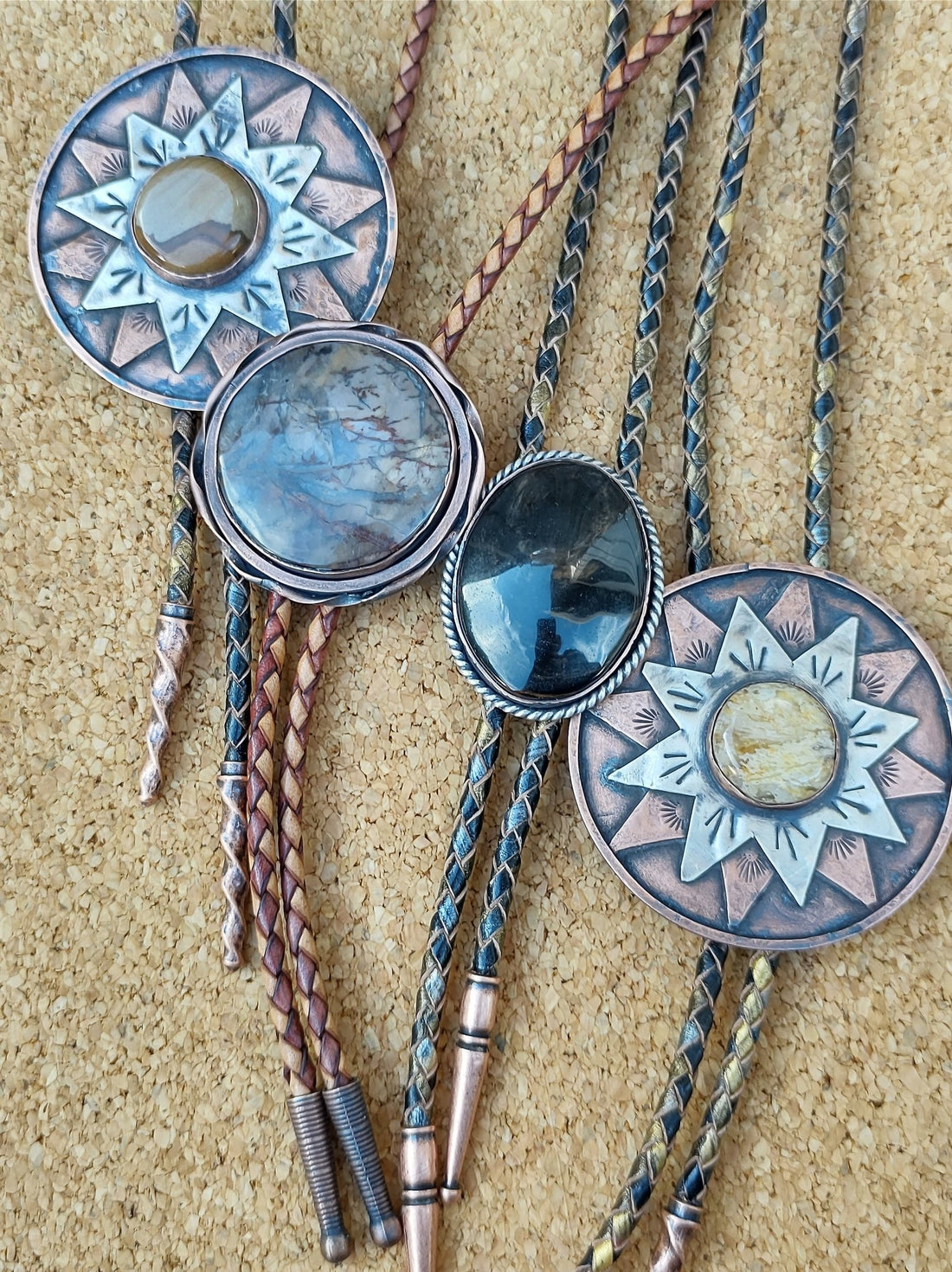
The Bolo Tie: A Fascinating Journey Through History and Style Evolution
The Bolo tie is a timeless adornment used by cowboys, politicians, and celebrities alike. This flexible piece of neckwear has a deep history and a fascinating evolution, thanks to its unusual design and irresistible appeal. In this blog article, we'll go back in time to investigate the origins, cultural importance, and style progression of the classic Bolo tie. Join us as we examine the history of this fashion classic and discover why it is such a popular accessory today.
1. The Beginnings: A Connection to the American West
The roots of the Bolo Tie, also known as the Bola Tie or Cowboy Neck Tie, may be traced back to the American West. Its characteristic design consists of a thread or string with ornate metal ends kept together by an ornamental slide. The actual origins of the tie are unknown, although most historians believe it was invented in the late 1800s by Native Americans or Mexican cowboys known as vaqueros. Historically speaking scarves were also worn around the neck and when the winds were blowing the scarf could be pulled up to cover the nose and mouth so some wonder if that is part of the origins of the Bolo Tie coming about.
Bolo Ties were originally used for practical purposes, such as keeping neckwear tight during outdoor activities. It immediately acquired favor among cattlemen and western pioneers due to its distinctive design, which made it appropriate for harsh settings. The Bolo Tie was imbued with a spirit of adventure and freedom as a result of its early link to the West, making it a symbol of the American frontier.
2. Cultural and Symbolic Importance
The popularity of the Bolo Tie skyrocketed in the mid-twentieth century, establishing its reputation as a symbol of Western heritage. It became a defining item for notable personalities such as Arizona Senator Barry Goldwater, who proudly wore it during his 1964 presidential campaign. As a result, the Bolo Tie became synonymous with Southwestern culture, embodying the region's rugged individuality.
The Bolo Tie garnered international renown for its exquisite patterns and craftsmanship outside of the American West. Native American artists contributed significantly to the growth of the tie, infusing it with their history, spirituality, and culture. Each Bolo Tie was transformed into a wearable work of art that reflected the distinct aesthetics of numerous tribes and groups.
3. Broad Adoption and Style Evolution
Bolo Ties had made their way into mainstream fashion by the 1950s. Hollywood celebrities such as Elvis Presley and John Wayne helped popularize the tie by conveying a masculine and cool image. As a result of the accessory's rising popularity, fashion designers began adding Bolo Ties into their designs.
The Bolo Tie experienced various changes throughout the next few decades. The tie evolved from simple leather cords to embellished silver and turquoise patterns, becoming a flexible ornament that could be fashioned to fit many events. It progressed from a typical Western item to a fashion statement worn by artists, musicians, and regular people.
The Bolo Tie has had a revival in recent years, with fashion-forward individuals using it as a statement of their distinctive style. Modern varieties include unusual materials such as wood, stone, and metal, allowing users to customize their look. The Bolo Tie simply lends a sense of originality and refinement to any look, whether casual or formal.

Conclusion
The history of the Bolo Tie parallels the independence and variety of the American West. The Bolo Tie has come a long way from its humble origins as a useful item to its current status as a trendy statement piece. The Bolo Tie continues to capture fashion fans and reflect the spirit of individualism, whether you accept its cultural roots or simply admire its distinctive appeal. So, the next time you wrap a Bolo Tie around your neck, consider the incredible growth and significance that this famous item represents.
Check out our selection of Bolo Ties
